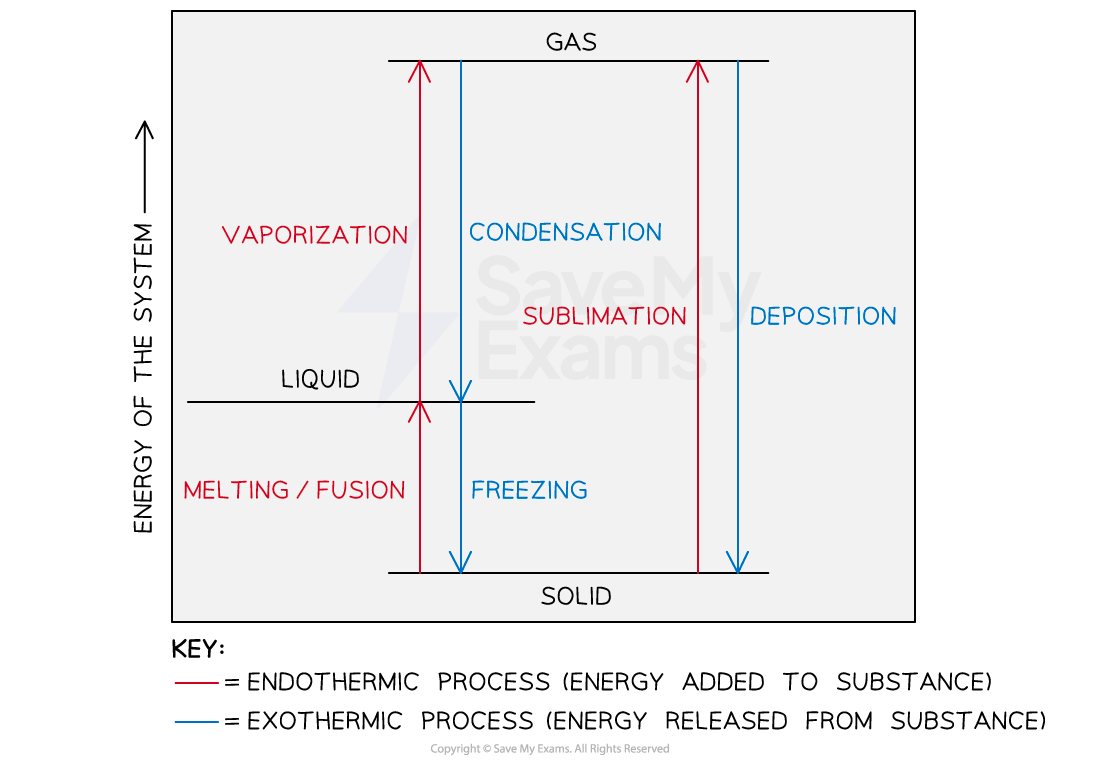Conservation of Energy
- All forms of energy can be converted from one form to the other, for example:
- We feel warm when we stand in sunlight because radiant energy is converted to thermal energy on our skin
- When a ball rolls down a hill, the potential energy in the ball is converted to kinetic energy
- The batteries which power our devices have the stored chemical energy converted to electrical energy
- All of these conversions and transfers proceed in accord with one of the most important observations in science:
Energy can be neither created nor destroyed
- During a chemical or physical process, any energy lost by the system must be gained by the surroundings and vice versa
- This important observation, that energy is conserved, is known as the first law of thermodynamics
- In a thermodynamic sense, this law is summarized as: “the total quantity of energy in the universe is assumed constant”
Internal Energy, E
- To apply the first law of thermodynamics to chemical systems, we must consider all sources of energy in the system being studied
- These are typically kinetic and potential energy
- The internal energy, E, of a system is the sum of all the kinetic and potential energies of the components of the system
- We generally do not know the numerical value of a system’s internal energy
- However, during a chemical reaction, we can measure the change in internal energy, ΔE, of the system
- This is mathematically defined as:
ΔE = Efinal - Eintial
- From the above relationship, we can define the direction of energy transfer between the system and surroundings during a physical or chemical change
- A positive ΔE value indicates Efinal > Einitial, which means energy is gained by the system from the surroundings
- A negative ΔE value indicates Efinal < Einitial, which means the system loses energy to the surrounding
- It is important to note that in keeping with the first law of thermodynamics, any increase in the energy of the system is accompanied by a decrease in the energy of the surroundings, and vice versa
Relationship between ΔE, Heat (q) and Work (w)
- Any energy exchange between a system and its surroundings is observed in the form of heat or work
- Hence, changes in the magnitude of the internal energy, ΔE, of a system could either be in the form of:
- Heat added or removed from the system
- Work done on or by the system
- This relationship allows us to mathematically define the first law of thermodynamics
- When a system undergoes any chemical or physical change, the change in internal energy, ΔE, is the sum of the heat added to or released from the system, q, and the work done on or by the system,w
ΔE = q + w
- It is important to take note of the sign conventions associated with work and heat in determining the value of ΔE
- When heat is gained by the system; q is positive
- When heat is lost by the system; q is negative
- When work is done by the system; w is negative
- When work is done on the system; w is positive
Worked example
Calculate the change in the internal energy for a process in which a system absorbs 140 J of heat from the surroundings and does 85 J of work on the surroundings
Answer:
Analyze: We are asked to determine the value of ΔE while being provided with the values of q and w
Plan:
- We must first determine the signs of q and w
- Then we substitute these values into the equation, ΔE = q + w to determine ΔE
Solution:
Step 1:
- The system absorbs heat, q = 140 J
- The system works on the surroundings, w = -85 J
Step 2: Substitute the values of q and w
- ΔE = q + w
- ΔE = 140 - 85
- ΔE = 55 J




